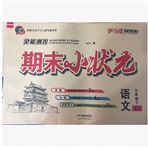题目内容
根据短文内容,从短文后的选项中选出能填入空白处的最佳选项。选项中有两项为多余选项。
For a lot of parents, sending their kids off to college is a bittersweet experience. I think a lot of teenagers head to college without any idea about how money works. Don’t let that happen to your college kid. Help them understand these issues before they step into that first class.
·Budget, budget, budget. 1. So start by making sure you understand budgeting and have begun to use it as part of your financial plan.
·Independence means responsibility. Living away from home means you have to take care of yourself. 2. Food doesn’t just drop out of the sky, and gas doesn’t magically appear in their car. Independence means responsibility.
· 3. Even if your kid is going to a small community college, they’ll still probably have a few thousand dollars of tuition to pay. If you break it down, one class can cost $1,000 at the very minimum! And that doesn’t even include books.
·Choose a major wisely. 4. This isn’t a must before they step on campus, but simply plant a seed that gets them started thinking about what they want to do with their life. You don’t want them graduating with a degree that leaves them unfulfilled or unable to find a job.
·Friends matter. 5. Who you hang out with definitely influences how you spend money and the decisions you make. Without being overbearing, remind them how important it is to have positive friends who build them up instead of bringing them down.
Remember, as a parent, just be there for support and to strengthen these principles throughout their college experience.
A. College isn’t cheap.
B. Cherish your opportunity.
C. Help your teenager find his or her passion.
D. However, not all friends can be really depended on.
E. New friends mean new opportunities and social situations.
F. Do your best to prepare your son or daughter for what that means.
G. If you aren’t using a budget, it’ll be difficult to convince your kid to use one.
 全能测控期末小状元系列答案
全能测控期末小状元系列答案
